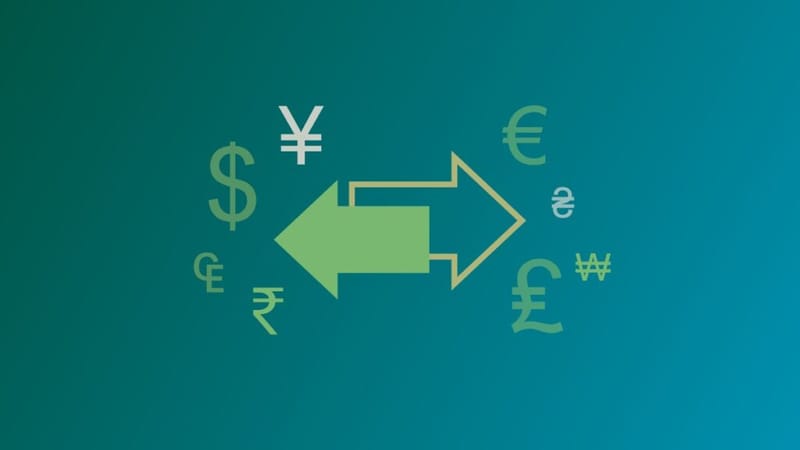Why International Transaction Charges Vary and How to Manage Them
Globally, companies lose USD 120 billion annually in transaction fees on cross-border payments.
For Indian exporters, SaaS founders, freelancers, and e-commerce merchants, that figure is more than a headline—it represents value leaking from every invoice you send abroad.
When you initiate a foreign payment, hidden costs strip away a portion of what your client actually sends. Collecting $5,000 from a US client might feel straightforward, but by the time intermediary fees, FX markups, and regulatory levies hit, your net can shrink by 2–6 % or more.
This is why understanding why international transaction charges vary is vital. With the right insights, you can reclaim margins, stabilize cash flow, and make every dollar count.
Understanding International Transaction Charges
International transaction charges are the total costs applied when funds cross borders or currencies. Unlike domestic transfers, international transactions involve multiple intermediaries, conversion steps, and compliance checks. Each stage adds a cost.
What Are International Transaction Charges?
These are all the costs deducted by banks, card networks, and payment processors to move funds internationally. They include:
- Processing and network fees
- Currency conversion spreads
- Intermediary bank fees
- Regulatory levies and taxes
For Indian businesses, these fees apply to most foreign inward remittances, whether through SWIFT, card networks, or digital platforms.
The Main Components
- Service or Processing Fee – A fixed or percentage-based cost for initiating a transfer.
- Currency Conversion Fee – The rate difference when changing from one currency to another.
- Intermediary Fees – Charges by correspondent banks in the SWIFT chain.
- Regulatory Levies – Small charges for compliance and document processing, such as FIRA or FIRC issuance.
Real Examples of Layered Costs
Consider an Indian e-commerce seller receiving $10,000 from a buyer in the US:
- The buyer’s bank charges $30 for a wire transfer.
- An intermediary bank deducts $15.
- The receiving bank adds a 2.5% FX markup.
- The FIRC certificate costs another ₹500.
The seller ends up receiving approximately $9,720. This layering is what makes international payments feel unpredictable and expensive.
Why Do Charges Vary by Provider and Corridor?
The total cost of a cross-border payment depends on several interconnected factors: the payment method, the route (or corridor), and the number of institutions involved.
Influence of Payment Mode
Different payment channels come with other pricing models:
- SWIFT or Wire Transfers: High fixed fees, best for large-value B2B payments.
- Card Payments: Include FX conversion, processing, and network costs (2–4% typical).
- Digital Platforms (like PayPal): Convenient but charge-laden services and FX fees.
- Neobanks and Fintechs: Use local clearing networks to avoid SWIFT intermediaries and reduce fees.
Key Factors Behind Variation
- Currency Corridor: INR–USD and INR–EUR corridors are cheaper because of higher transaction volumes. Less common pairs, like INR–JPY, incur higher spreads.
- Transfer Amount: Smaller transfers often have higher percentage costs. Large transfers get lower rates or capped fees.
- Jurisdictional Regulations: Some countries charge compliance or audit fees for cross-border movement.
- Provider Policies: Banks prioritize margin; fintechs prioritize volume and transparency.
Intermediary Banks and Hidden Deductions
Each transfer may travel through two or three correspondent banks before it reaches India. Each one takes a small service fee. The sender and receiver often have no visibility on this deduction until funds arrive.
These “invisible hands” are one of the biggest reasons why international transaction charges vary so widely.
The Impact of Currency Conversion and FX Markup
Currency conversion is where the most significant hidden costs live.
How Banks Set Exchange Rates
Banks and traditional payment providers rarely use the live mid-market rate (the rate you see on Google). Instead, they add a hidden margin on top of that rate before showing it to you.
For instance:
- The mid-market USD/INR rate may be 83.10.
- Your bank converts at 82.30, keeping ₹0.80 per dollar as spread.
- On a $10,000 transfer, that means ₹8,000 lost in conversion.
Forex Markup: The Invisible Charge
Banks don’t show markup as a separate line item, making it hard to identify. Most businesses only realize how much they lose when they compare multiple providers side by side.
Typical 2025 markups:
- Banks: 2–3.5% above mid-market rate.
- Legacy payment platforms: 2–4%.
- Fintech providers: 0.3–0.8%.
- Neobanks: Often zero markup with a fixed processing fee.
Practical Example
If an exporter receives $100,000 annually, saving even 1.5% on FX markup means an extra ₹125,000–₹130,000 retained as profit.
New Developments in Reducing Transaction Costs (2025)
Technology and regulation are reshaping cross-border payments. The changes are now visible in both transparency and cost efficiency.
Rise of Neobanks and Transparent Fintech Platforms
Neobanks and payment platforms built for digital commerce now offer:
- Real mid-market FX rates.
- Transparent, flat transaction fees.
- Real-time tracking of settlements.
- Automated compliance documentation like FIRAs and FIRCs.
These platforms route payments through local systems like ACH, SEPA, and Faster Payments, bypassing costly SWIFT intermediaries.
Regulatory Push for Transparency
Global regulators are pushing for fee standardization and transparent disclosure.
- The European Union already mandates upfront display of all fees and markups.
- The Reserve Bank of India is studying similar frameworks for better visibility in cross-border charges.
- Compliance automation is reducing costs for smaller exporters who used to rely on manual paperwork.
Tech-Driven Optimization
Fintechs are using AI and routing algorithms to minimize costs automatically.
- Payment orchestration engines route transfers through the cheapest corridor.
- Dynamic checkout technology allows customers to pay in local currency.
- FX optimization tools identify the best time to convert funds.
For Indian SMEs, these tools turn international payment management from reactive to strategic.
Practical Strategies to Manage and Minimize Charges
Businesses cannot avoid international transaction charges, but they can manage them smartly to protect profits.
Compare Providers on Real Value
- Don’t just compare the visible fee. Look at the final credited amount in INR.
- Ask providers for a breakdown of FX markups, intermediary fees, and taxes.
- Use platforms that show rates and total deductions upfront before transfer.
Use Multi-Currency Accounts
- Receive payments in USD, GBP, EUR, or AED directly.
- Hold balances in foreign currency until the rate suits you.
- Convert only when needed instead of at the time of receipt.
- Automate reconciliation and FIRC documentation through fintech dashboards.
Optimize FX Conversion
- Track exchange rates weekly and plan conversions accordingly.
- Combine multiple small payments into one conversion to reduce markup.
- Set alerts for favorable rate movements.
- Avoid frequent micro-conversions that increase percentage costs.
Prevent Hidden Fees
- Confirm if inbound transfers include receiver-side fees.
- Check for FIRC or remittance certificate costs before settlement.
- Prefer fintechs or neobanks that absorb intermediary bank charges in their flat pricing.
By combining transparent providers, better timing, and local collection tools, businesses can cut cross-border costs by up to 50%.
Dissecting Fee Structures: Banks vs. Fintechs
Understanding who charges what helps you choose the right partner.
Banks typically include:
- Fixed wire fees ($25–$50 per transaction).
- FX markups of 2–3%.
- Hidden deductions by intermediary banks.
- Delays in compliance documentation.
Fintech platforms and neobanks offer:
- Flat or low per-transfer fees ($1–$5).
- Transparent mid-market FX rates.
- Instant or next-day settlements.
- Automatic issuance of compliance documents.
Example for a $1,000 transfer in 2025:
- Bank wire: around $950 received.
- PayPal: $935 received after platform and FX charges.
- Fintech platform: $990–$995 received.
This difference accumulates quickly when your monthly inflows exceed $10,000.
Forex Markup Explained – What’s Hidden in Exchange Rates?
The FX rate you see from your provider is rarely the actual rate.
How Markups Work:
- The provider buys currency at one rate and sells it to you at a slightly worse rate.
- The spread between these two rates is their profit margin.
- The markup changes daily based on volatility and liquidity.
What Influences Markup:
- Transaction size: Larger volumes often receive better pricing.
- Corridor: High-demand corridors like USD/INR have tighter spreads.
- Provider type: Banks apply static markups; fintechs use live rate engines.
How to Check Transparency:
- Compare the offered rate with the mid-market rate from Google or Reuters.
- Ask if the rate shown includes markup.
- Favor platforms that show both the real-time rate and the fee separately.
Optimizing for Specific Business Needs
Each business model handles international payments differently. The key is to align payment strategy with operational priorities.
Freelancers and Consultants:
- Use fintech platforms that provide local collection accounts in client countries.
- Avoid receiving via cards or PayPal when possible.
- Batch conversions to save on FX fees.
E-Commerce Merchants:
- Offer localized checkout so customers pay in their own currency.
- Use multi-currency accounts to collect and hold funds regionally.
- Integrate automated reconciliation with marketplaces or ERP tools.
SaaS Businesses:
- Implement API-based billing systems for recurring cross-border payments.
- Price subscriptions in major currencies like USD or EUR to reduce FX exposure.
- Set FX alerts for revenue conversion.
Exporters and Marketplaces:
- Maintain foreign currency balances to pay suppliers or partners directly.
- Match inflows and outflows in the same currency to avoid unnecessary conversions.
- Schedule conversions based on quarterly cash flow needs.
A tailored payment strategy can increase annual profitability without changing pricing or volume.
Conclusion
International transaction charges are a part of global business, but they should never be a black box.
As fintech platforms, neobanks, and regulatory frameworks evolve, businesses now have real options for transparency and control.
By using multi-currency accounts, transparent rate providers, and innovative FX management, Indian exporters, SaaS firms, and freelancers can:
- Reduce cross-border fees by up to 50%.
- Improve cash flow predictability.
- Strengthen customer and client trust through faster settlements.
The future of global business belongs to those who treat international payments not as a cost, but as an opportunity for more intelligent financial control.
Keep an eye for more latest news & updates on Knowledgearrow!






